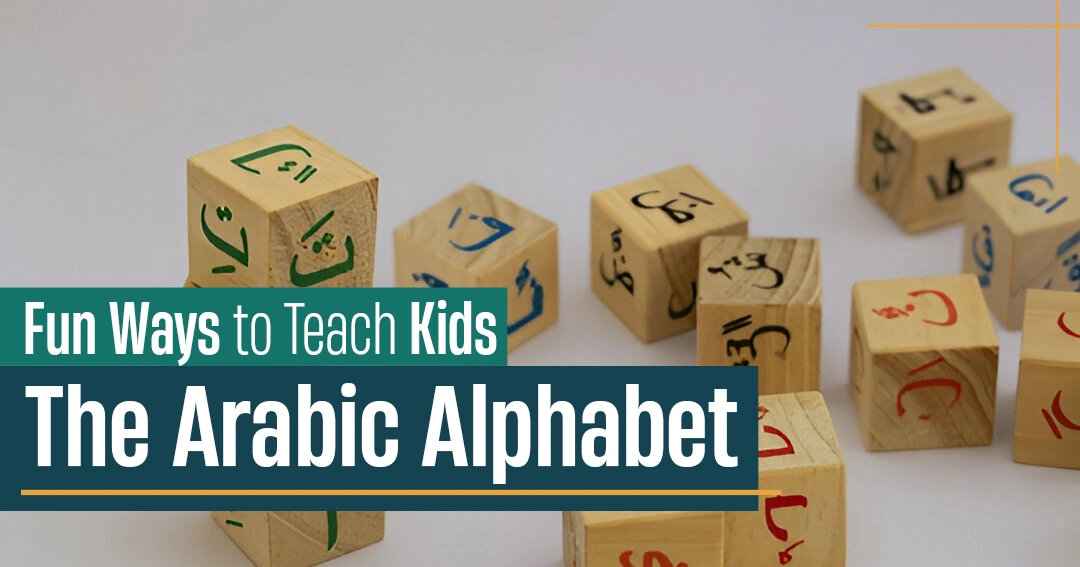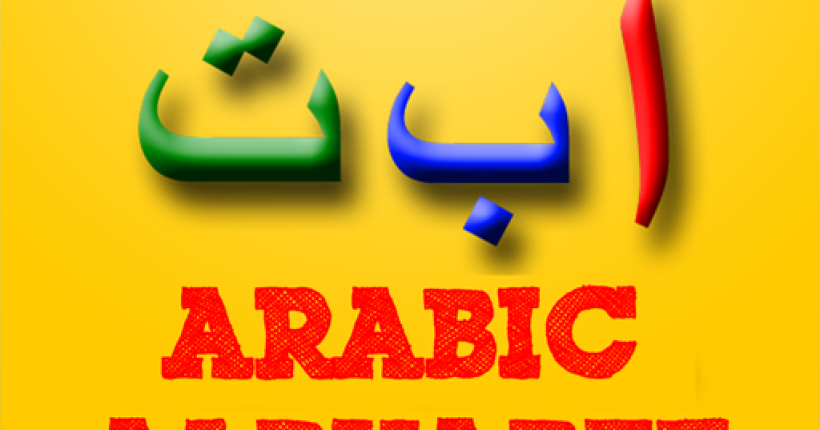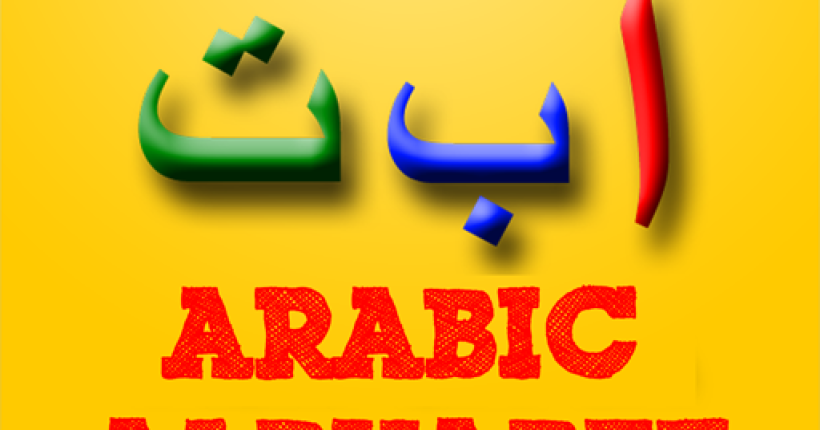The Arabic Alphabet for Kids can be an enjoyable and rewarding experience but not necessarily stuffed with boring drills and memorization. You can make learning fun and interesting by creating a learning experience that will kindle the imagination of your child.
From colorful flashcards to song and dance routines and interactive apps, there are many creative ways to introduce children to the Arabic alphabet. Here are some activity-packed methods that will not only have your child learning but also enjoying the Arabic Alphabet!
Why It’s Important to Make Learning Fun?

it’s important to make learning Arabic Alphabet for Kids fun to make it more effective, and make its easier for them to understand.
1. Fun Makes Learning Effective
Learning the Arabic Alphabet for Kids must never be boring. When kids have fun, they learn more, and it’s simpler for them to recall and understand what they’re learning.
2. Engage the Senses
A fun, interactive approach uses images, sounds, movement, and fantasy. Kids learn most when they’re acting, not listening or remembering.
3. Curiosity Fuels Learning
With games, songs, and colorful materials, Arabic Alphabet for Kids is made enjoyable. Kids are more likely to stay curious and interested in learning when they enjoy doing it.
4. Reduces Pressure
Learning is made simpler for both parents and kids as they escape the pressure of memorization by force. Learning the Arabic Alphabet for Kids becomes a daily routine.
5. Consistency is Key
When kids play, they are bound to do it every day, and that leads to lasting success.
We at Tareequl Jannah Academy offer learning through play in the form of games, story lessons, and worksheets with colors. Our methods are designed to keep kids entertained while they learn the Arabic Alphabet for Kids.
Top ways to teach kids Arabic Alphabet

Here are the 7 to methods to teach kids Arabic in a fun and easy way:
1. Use Colorful Flashcards and Posters
- Vibrant Visuals Help Children: Young kids are attracted to colorful flashcards and posters naturally. Connecting each Arabic letter with colorful images or fun characters makes them easier to recognize and remember.
- Interactive Learning using Flashcards: Flashcards are perfect for creative games like letter-matching, memory activities, or quizzes. These activities keep kids interested and motivated to learn the Arabic Alphabet for Kids.
- Posters Keep the Learning fun: Having colorful posters displayed around the learning area makes the Arabic Alphabet for Kids visible all day. This encourages passive learning when lessons are not in session.
- Learning at Home or Online: Whether learning online through classes or at home, the inclusion of colorful learning materials makes it more enjoyable.
With Tareequl Jannah Academy, parents can be provided with expert tools and professional advice so that learning Arabic is fun.
2. Arabic Alphabet Songs and Videos
- Children Love Music: Learning the Arabic Alphabet for Kids becomes fun and memorable through music. Catchy and repetitive rhythms make it simple for children to learn letters naturally.
- Improves Pronunciation and Remembers: Singing the Arabic alphabet helps kids with pronunciation, enhances memory, and makes learning enjoyable.
- Multi-Sensory Approach: Singing songs that include visual cues or animated videos showing letters through words and images employs more than one sense and hence is convenient for young kids to learn.
- Easy Access to Songs and Videos: Arabic Alphabet for Kids songs can be easily found on YouTube or learning apps, but structured direction can make the learning process even more efficient.
- Make Learning Joyful and Purposeful: Including music in your child’s Arabic learning curriculum is a simple and effective means of accomplishing this.
3. Interactive Arabic Alphabet for Kids Apps
Digital Learning Tools: Interactive apps are the best way to teach the Arabic Alphabet for Kids. Children enjoy playing with tablets and phones, so screen time can be productive learning time.
Many apps have fun features like: Letter tracing, Audio pronunciation, Matching game, and Quiz. These elements keep children interested, reinforce learning, and instill confidence.
Top Arabic Alphabet Apps for Kids:
1. Alif Baa Taa
Simple, colorful app for beginners
Trains letter identification and pronunciation
2. Learn Arabic for Kids (Droos Academy)
Features excellent images, letter tracing, and games
Incorporates animal names, colors, and easy vocabulary
3. Noorani Qaida by Quran Majeed
Great for Quranic Arabic and letter sounds
Basic to advanced step-by-step lessons
4. Fun Arabic Alphabet Game
Games-based learning
Promotes memorization with challenges and levels
4. Hands-On Activities: Tracing, Coloring & Crafting
Many young learners learn best through hands-on activities. When learning the Arabic Alphabet for Kids, fun creative activities such as tracing, coloring, and crafting make learning a play experience, and that’s when it’s memorized! Here is why Hands-On Learning Works:
Activates motor skills and supports memory.
Holds children interested through creative play.
Makes each Arabic letter tactile and tangible.
Adds variety to learning routines—no more dull repetition!
Fun Hands-On Activities to Try
Tracing Worksheets
Perfect for practicing letter shapes.
Start with large letters, then slowly introduce small ones.
Coloring Pages
Let children color each Arabic letter with a word and image (e.g., ب for بطة – duck).
Strengthens visual recognition and word association.
Craft Time
Make Arabic Alphabet for Kids with clay, or paper cut-out letters.
Make a 3D Arabic alphabet wall at home!
Letter Puzzles
Sort and sequence letter cards to form words.
Strengthens problem-solving skills and letter recognition.
5. Storytime with Arabic Alphabet Characters
Kids love stories, and integrating storytelling is an excellent way to teach and reinforce the Arabic Alphabet for Kids. When letters are characters in engaging stories, kids form emotional connections and remember them more. Why Storytelling Works for Learning Arabic Letters:
Brings every letter to life with a unique personality or role.
Builds a story around every letter, making it easier to remember.
Encourages listening and comprehension skills alongside letter identification.
Helps children in observing how letters form words and sentences in a beneficial way.
Here is some Arabic Alphabet Fun Story Ideas for Kids:
“Alif’s Adventure” – Alif goes on an adventure throughout the Arabic world, where he meets his friend letters.
“The Story of Ba and Ta” – A fun story that shows that identical letters sound differently.
“Zay the Zookeeper” – Introduce the letter ز in a zoo-themed story that has lots of Arabic animals.
You can read them aloud, stage them with puppets, or even have your child help with creating their own letter story!
6. Involve Everyday Life
Learning doesn’t have to be just during lessons! Your daily routines offer limitless opportunities to introduce the Arabic Alphabet for Kids within every day, relevant situations.
If Arabic letters are familiar in your child’s ordinary world, then they will naturally learn them without effort and at their own leisure. Why Everyday Life Learning Works?
Turns mundane moments into learning moments.
Makes letters of the Arabic alphabet significant and accessible in a child’s world.
Children learn without assuming they are at school.
Enforces what they acquire through structured teaching.
Here are Simple Ways to Apply Everyday Life for Learning:
Mark Household Objects
Mark ordinary things with Arabic letter names like باب (door), كرسي (chair), or كتاب (book).
Get your child to notice and read them daily.
Arabic Alphabet in the Kitchen
While cooking, introduce letters through ingredients (e.g., ت for تمر – dates, ل for ليمون – lemon).
Ask them to draw or match letters to foods.
Shopping Letters Game
Ask your child to look for Arabic letters on packages or store signs.
Make it a challenge game, “Who can find the letter م first?”
Use Arabic During Playtime
Call out toy names in Arabic or play letter sorting games.
For example, gather toys that start with the letter س or ع.
Bedtime Routines with Letters
Use a short bedtime story to highlight one Arabic letter per night.
End the day with a calm, positive association with the letter.
7. Learn Together as a Family
Learning the Arabic Alphabet for Kids needn’t be an isolating experience! Group games and play are a great way to make learning social, interesting, and very interactive.
Classroom or home play with siblings or friends reinforces motivation and solidifies lessons through co-operation and enjoyment. The benefits of Group Learning include:
Encourages children to cooperate and communicate with each other.
Introduces some friendly competition to keep them motivated.
Helps shy students to be comfortable with the support of peers.
Brings learning environment to life and makes it more vibrant.
Some of the Interactive Group Game Activities include:
Arabic Letter Bingo
Say aloud letters, and kids mark them on their bingo cards.
Whomever gets a line first wins a small prize!
Letter Hunt
Set flashcards in secret places in the room and let children search for and identify them.
Good for kinesthetic learners who like to move around!
Memory Match
Create pairs of cards (letter and related word/picture).
Make it an enjoyable memory game for small groups.
Conclusion.
With interactive and fun methods of learning the Arabic Alphabet for Kids, learning becomes a lifelong passion. From song and games to colorful apps, there are endless possibilities for making the experience enjoyable and worth remembering.
Armed with the right tools and training, your kid will not only learn the Arabic alphabet but also enjoy every second of it. So, start making learning fun today and watch your child thrive!



